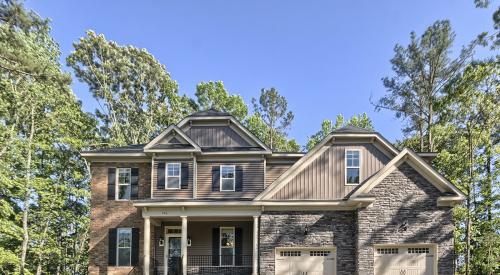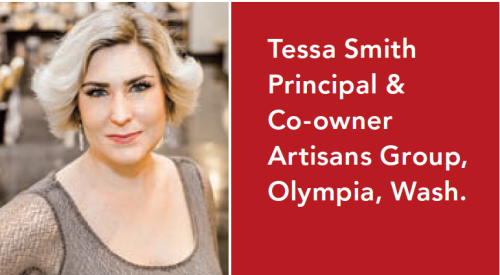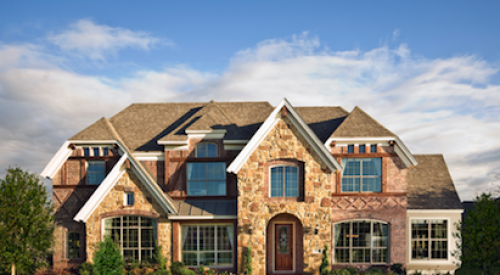In this day and age, every company’s got a mission statement. Or a vision. Or an ethic. But for how many companies is that one-liner actually a meaningful statement that pervades every aspect of the entire organization? One, at least, says Kristen Shewfelt, Director of Environmental Programs at McStain Enterprises in Boulder, Colorado. Founded by Tom and Caroline Hoyt, McStain’s ethic is simply to build a better world.
If you had asked Shewfelt twenty years ago if working in Colorado for a home builder, green or not, was the life she’d be living out, she’d probably laugh. Trained as a classical vocalist, she spent much of her time in younger years singing opera and traveling. Now Shewfelt’s job is to ensure that McStain’s mission, backed by a deep environmental ethic, truly does affect every action and decision of the company—from mastic tape to blown cellulose insulation to office paper.
Professional Builder: What’s an average day like as Director of Environmental Programs at McStain?
Shewfelt: There’s no such thing as an average day for me, because I work mostly on a project basis. I’m working with our R & D team this week to set our priorities for the year 2001. The R & D team is an interdepartmental group representing purchasing and estimating, customer service, construction and sales and marketing that collectively makes decisions about new product choices. Right now I’m doing research for the R & D team on the possibility of including a solar hot water heater as an option in our single-family homes in one community. I also have a meeting with some recycling gurus in northern Colorado to discuss a construction waste recycling program in our new Loveland community.
On Thursday, I have project team meetings all day. Typically in those meetings we discuss issues like specs for a project or the sales and development plans for a particular project. I’m there to be the environmental voice and make sure our environmental guidelines are incorporated into the plan. Then Friday I’m meeting with my Green Team to do our quarterly newsletter, which talks about green practices within the company.
I’m headed to the HBA tomorrow for a meeting to revise the Built Green checklist. We’re trying to make it a little more aggressive as the program matures. I’m also working on a presentation that I’ll give in Fairhope, Ala., to a builder’s group that is trying to develop a green building program down there.
So you do some outside work as well?
I am essentially the external voice for McStain’s environmental ethic. It’s part of my job description to be an industry/government liason, and part of the McStain mission is to spread the word and help others doing or thinking about doing green building.
You kind of grew up with the green building program in Colorado. What was that like?
I first started working for McStain back in early ‘95 in land acquisition. When I got there, they had all these boxes on the floor and I remember saying to Tom, “What is this?” And he said, “Oh, that’s some environmental stuff.” A woman who was here before me used to work on construction waste recycling and office recycling, but it had just kind of gotten dropped. So I said, “Oh, I’ll do it, I think this is fascinating.”
The next thing I know I was hooked up with green building consultant David Johnston and I was attending green builder meetings. It was just new—it was this little baby. But nobody really knew about green building. We just started defining it as we went along, so I really did grow up with it. It was a great experience—it has been a great experience.
In the meantime, was McStain doing green building?
Well, we were doing some green building, but it wasn’t until ‘96 when the HBA had a program that was joinable that it became formal. McStain was doing its thing and on the other hand, I was working within the industry to help develop a definable program that you could attach yourself to in a marketing sense. The two dovetailed together—as our in-house green building developed, the program aligned us with an industry initiative and it gave us a checklist system that enabled us to define exactly what building green means for the consumer.
You’re part of the LEED-R development process as well, and seem to act as a reality check for some of the scientists and consultants in that group.
I think what processes like LEED [Leadership in Energy and Environmental Design] lack is a lot more organizational thinking on really how to make these changes happen. I know exactly what it means for builders to even consider making an 86 versus an 80 HERS rating standard. We have a standard of 86, but it took us a while to get there, and it took a lot of work. It required lobbying to get purchasing and estimating behind that, to get construction to buy in, to set up communication with our subcontractors, with our field superintendents—it’s a very complex process to make something a standard and then translate it into behavior. I think that building organizations know this and so we bring that reality perspective to processes like LEED.
But, I’ll speak for Denver because I’ve been involved in both LEED and the green building guidelines here in Denver—it’s making us raise our bar. I think LEED is pretty aggressive, but it’s a good benchmark.
And what about your subcontractors? How do they feel about McStain constantly raising the bar?
It was a challenge way back in the beginning, in ‘94 and ‘95. You know, you’re asking people to do things differently. As an example, asking our subs to switch from duct tape to mastic sealants was a challenge because it requires a different kind of assembly. Mastic sealant requires subs to pre-assemble the duct layout, then apply the mastic, then install it above—it’s different sequencing and it’s different materials that maybe people aren’t used to using all the time. It was more getting people used to different patterns of behavior.
Just recently in our performance testing—after bragging about one of our subcontractors, Paul Weir, who does our cellular insulation installation—our energy ratings came back and we were getting R-34, 35, 36. Well, we say we do an R-38 ceiling/attic insulation.
So, I called Paul on the phone and talked to him about it, and said, “I don’t know if this is a quality control problem or if maybe the guy who’s doing the rating is not able to access the attic appropriately and do a good calc.” I have to tell you, Paul went out there and checked everything, and found out indeed he did have a quality control problem, and he resprayed the cellulose to bring it up to standards. And that’s just one example of how our subcontractors want to do a good job and want to be recognized for doing a good job. We have great long-standing relationships, and I think the key is nurturing those relationships.
Do you think McStain’s holistic environmental ethic is something that would translate well in most companies?
It needs to come from the top. The top has to really buy into it, find out where the paths of obstruction are, and work from there. I went to a seminar where I listened to CEOs of different companies talk about the value shift within their companies. Post WWII workplace values used to be very volume-driven—it was energy and resource intensive, everything was a very linear-oriented, production manufacturing process. Now, very innovative industries across the board—not just McStain—are value-shifting as businesses are impacted by things like higher energy costs, population pressures, resource scarcity issues, the growing global competitiveness.
The emphasis today is on value, value, value. And because those value shifts are taking place, in my humble opinion, I think the companies that have the best opportunities for long-term survival are moving in that direction.
I would say we, as an industry, probably have a long way to go. But I see, for example, the existence of different green building programs around the country—New Mexico, Washington, Denver, Atlanta—as an indication that portions of the industry are trying to move towards a value-based decision making process. The reality is that we builders do have a tremendous impact on the communities we serve and on the environments around us.
And is that value shift consumer-driven? What do you think your home buyers value most?
Well, I think our home buyers are like a lot of home buyers, they value the location of their home, they value the floor plan, they value the design of the home. I think that home buyers, really more and more so, do value the energy efficiency of the home—how a home performs and whether it provides them monthly savings on their utility bill. I think indoor air quality is another growing concern to consumers, and I think the overall environmental ethic is becoming a greater value. Data from surveys taken at the time of contract in September of year 2000, shows that, in our six communities, 16 to 48 percent of buyers said that our environmental package was part of their purchase decision.
So, when you were studying to become a world famous musician, did you have any idea that the road would lead you to energy efficiency and inspecting blown cellulose insulation?
(laughs) No, my mother always says to me, “Kristen, what the hell are you doing in Colorado?” You know, I was very young and had these ideas I’d be singing at Carnegie Hall and then, well I had done enough singing to realize that that was not the road for me, it’s not the life I wanted to lead. I didn’t think it would provide me with the opportunities in life that I was looking for.
And has this, so far?
Yes, it has. I love my peer group, I love the people I work with. I think they’re intelligent people with good hearts. I think they have good ethics, good value systems, and they’re always looking do the best thing possible.
I was looking for something to allow me to grow, and when I came here and I looked at that box on the floor that Tom said was “Environmental Programs,” that was it. Somebody said, “I’m going to give you a chance to go and run with it, I’ll support you as much as I can but it’s really on your shoulders.” And I did run with it, Tom and Caroline really believed in me, and I will be forever grateful to them for that because it opened up a lot of opportunities in my life.
Are there any challenges or mistakes from those early days that you look back on now and kind of laugh about?
When we started we were such neophytes, all the people at the table. We were crafting the program ourselves, and we didn’t have a very strong knowledge base. Once we were trying to make a judgement call on CPVC product and we were asked to make an evaluation on whether this should be considered a green building product. Well, CPVC in some circles can be considered controversial, and in other circles it is not. We didn’t know how to make that judgement on that and realized we needed input from more building science professionals in the program.
We erred on the side of safety on that particular product, and in the absence of a comfort level we declined to use the product. What that process taught us was that there was a certain level of scientific expertise missing.











